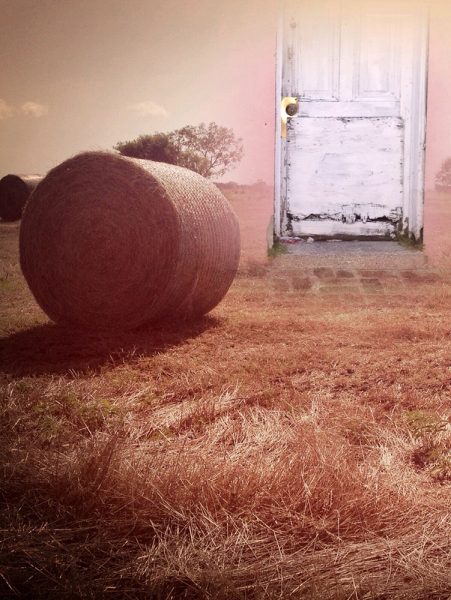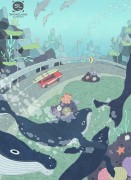“Aufgaben: ein Triptychon” is the first story to be published at SmokeLong Quarterly as part of our Global Flash Series. The English translation of the interview follows the German below.
Servus, Rupprecht! Ich finde den Ton und die Stimme/n in dem Triptychon “Aufgaben” unheimlich und spannend zugleich. Stellen diese Ich-Erzähler alle die selbe Figur dar? Wenn nicht, was verbindet sie?
Die Perspektive und der Ton des Ich-Erzählers in meinen Miniaturen wechselt sehr stark. Hier sind sie relativ einheitlich, obwohl die Texte ursprünglich nicht als “Triptychon” konzipiert waren: Hier ist jemand von der Situation, in die er gerät, überfordert. Nur in “Hunger” versucht er sich mit Selbstironie aus einer beklemmenden Situation zu befreien.
Wer sind diese Männer die über den Berg kommen? Und die Geräusche aus den Mülltonnen?
Wer die Ereignisse der letzten Jahre in Europa verfolgt hat, der wird bei den über den Berg kommenden Männern gleich an Flüchtlinge denken. Was das Skalpell bedeutet, mit dem diese Menschen von einengenden Krawatten und von gestärkten Vorhemden (wie sie vor über 100 Jahren üblich waren) befreit werden, bleibt jedoch ein Rätsel (wenn man nicht gleich an die muslimischen Frauen denkt, die wir von ihren Burkas befreien wollen). Große, unverschlossene rechteckige Müllbehälter werden in Deutschland als “Container” bezeichnet, wie die auf Lastwagen transportierten Frachtcontainer, in denen in England und in Österreich Dutzende von Flüchtlingen erstickt sind. Wenn von einem Klopfen aus Containern die Rede ist, dann wird sofort die Erinnerung an diese Vorfälle wach. Aber es ist nicht so, dass ich mit diesen Geschichten die Flüchtlingsproblematik “verarbeiten” oder “thematisieren” wollte. Es handelt sich um “Gesichte” oder Tagträume, die ich selbst erst nach dem Aufschreiben analysiere. Dann finde ich, wie der Leser wahrscheinlich auch, manchmal solche Erklärungen — oder auch keine.
Du schreibst und veröffentlichst Kurzgeschichten auch auf englisch. Empfindest Du einen Unterschied zwischen den beiden Sprachen bezüglich Ton, Stimme, usw? Oder einen Unterschied zwischen den Themen?
Ich habe früher selbst englische Texte verfasst, aber es war eigentlich kein echtes “dual writing”, sondern eine sehr freie Übersetzung meiner deutschen Texte ins Englische. Die Übersetzungen habe ich dann von Muttersprachlern korrigieren lassen, manchmal waren es zwei oder drei. Aber für die Endfassung war ich immer selbst verantwortlich. Später haben Kenneth Kronenberg und Eldon Craig Reishus Texte von mir übersetzt, und das Ergebnis fand ich gleich viel besser. Als Übersetzer chinesischer Literatur weiß ich natürlich, dass Literatur nur von Muttersprachlern übersetzt werden kann. Als ich Craig einmal fragte, warum denn trotzdem meine eigenen Übersetzungen bei so vielen US-Jounalen gut angekommen seien, meinte er: “Vielleicht mochten sie den teutonischen Ton”. Tatsache ist, dass viele meiner Miniaturen eine sehr knappe und schmucklose, fast harte Sprache aufweisen. Wenn sie nur aus kurzen Sätzen bestehen, dann muß man manchmal nicht viel ändern, wenn sie durch Google-Translate gelaufen sind …
Du bist selbst Übersetzer–Chinesisch/
Darüber könnte man ganze Bücher schreiben. Die chinesische Sprache ist sehr ökonomisch und dicht, 100 Silben Chinesisch enthalten viel mehr Information als 100 Silben Deutsch. Hier muß man Mut zur Straffung haben und das Selbstverständliche und Redundanzen weglassen. Dazu kommt, dass Autoren immer noch nach der Anzahl der Schriftzeichen bezahlt werden, und selbst der Nobelpreisträger Mo Yan ist stolz darauf, dass seine Romane so lang sind. In Deutschland sind Romane mit vielen Hundert Seiten praktisch unverkäuflich. Bei erfolgreichen Übersetzungen entdeckt man oft, dass der Übersetzer ganze Passagen weggekürzt hat. Besonders bei vormodernen Texten bilden die Namen ein Problem. Der chinesische Leser sieht die Schriftzeichen und kann sie sich wegen deren konkreten Bedeutungen die Namen und die Figuren merken, der ausländische Leser sieht nur die fremdartigen Umschrift-Silben und kann sich höchstens zwei oder drei Personennamen einprägen kann. Bei einem gegenwärtigen Projekt übersetze ich die Frauennamen nach ihrer Bedeutung, z.B. “Zikade”. Das hilft, bringt einem aber leicht den Vorwurf des Exotismus ein.
Hast Du selbst die Welle von Immigranten mitbekommen?
Ich wohne in Burghausen an der Salzach, dem Grenzfluss zwischen Deutschland und Österreich. Bei uns ist es ruhig geblieben, aber flussaufwärts, in Freilassing (bei Salzburg) und flussabwärts bei Passau haben Tausende von Flüchtlingen die Brücken überquert. Dort und in München gab und gibt es eine große Hilfsbereitschaft in der Bevölkerung, während im Gegensatz dazu die bayerische Regierung die Kanzlerin wegen ihrer Flüchtlingspolitik massiv angreift.
*
English Translation:
Hi, Rupprecht! I find the tone and voice in the triptych “Entrusted” eerie and thrilling at the same time. Are all three of these narrators the same character? If not, what connects them?
The narrators’ perspective and tone in my micros vary considerably. Here they are relatively homogeneous even if they weren’t originally conceived as a triptych. They all find themselves overwhelmed by their situation. Only in “Hunger” does the narrator try to free himself from it through poking fun at himself.
Who are these men coming over the mountain? And the tapping noises coming from the rubbish containers?
Anyone who’s followed the events in Europe over the last decade will immediately think of refugees coming over the mountains when they read the middle section of the story. The blade that frees these people from their antiquated clothing is a bit of mystery but not if you make the connection to Muslim women and the burka.
A large square rubbish bin in Germany is referred to as a “container,” like those used to transport cargo in which dozens of refugees suffocated in England and Austria. Tapping coming from “containers” suggests these events. Though it was not my original intention to work through the refugee crisis as a central theme here, looking at my writing afterwards as a reader I often see these threads and explanations – or sometimes not.
You also write and publish short stories in English. Do you feel a difference between English and German in terms of tone, voice, etc.? Do the two languages lend themselves to different themes when you write?
I used to write English texts that were loose translations of my German texts. I’d then give them to a native speaker to correct. I was always responsible for the end version of course. Later Kenneth Kronenberg and Eldon Craig Reishus translated my work, and I found the result a lot better. As a translator of Chinese literature I know of course that literature should be translated only by a native speaker of the end language. Having said that, when I asked Craig why so many US journals liked my own English translations of my German work, he thought maybe they liked my “Teutonic tone”. In fact, my micros are often laconic and bare, even terse. When they’re made up of only short sentences, sometimes I wouldn’t have to change much if I ran them through Google Translate.
You are yourself a translator (Chinese to German) and you lived for a while in China. What’s the most difficult aspect of translating Chinese to German?
How long do you have? There are books on this topic. Chinese is a very economical and dense language. One hundred syllables in Chinese contain much more information than the same number of syllables in German. You have to have the courage to tighten, to let go of givens and redundancies. Authors, however, are still paid by the word, and even Nobel Prize winner Mo Yan is proud that his novels are so long. In Germany very long novels are practically unsalable. Successful translations often leave out entire passages.
Names, for example, in premodern texts pose a problem. The Chinese reader can remember the concrete meaning of names and fictional characters when they see a particular Chinese character, while the foreign reader can remember at most three characters when reading pinyin, the romanized transcription of Chinese. In a current project I’m translating the women’s names according to their meanings (e.g. Cicada), which helps but exposes the translator to accusations of exoticism.
Have you witnessed the wave of immigrants first hand?
I live in Burghausen on the Salzach river, which forms the border of Germany and Austria. It’s been quiet here, but upriver in Freilassing (near Salzburg) and downriver near Passau thousands of refugees have crossed the bridges. The people of Munich have shown a great willingness to help even while the Bavarian government fiercely attacks Chancellor Merkel for her immigration policies.



 The core workshop of SmokeLong Fitness is all in writing, so you can take part from anywhere at anytime. We are excited about creating a supportive, consistent and structured environment for flash writers to work on their craft in a community. We are thrilled and proud to say that our workshop participants have won, placed, or been listed in every major flash competition. Community works.
The core workshop of SmokeLong Fitness is all in writing, so you can take part from anywhere at anytime. We are excited about creating a supportive, consistent and structured environment for flash writers to work on their craft in a community. We are thrilled and proud to say that our workshop participants have won, placed, or been listed in every major flash competition. Community works.